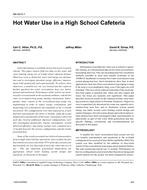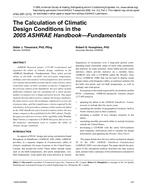Power shortages are forcing residential sector to rely on backup diesel generators (DG). Using photovoltaic (PV) technology can be one of the clean solutions to this problem; however its adoption is challenged by its relative high capital cost. To overcome this challenge, we propose reducing the initial construction cost through the use of local low-embodied energy construction materials and use the savings resulting from envelope replacement costs to offset the PV cost. A typical house in the dry desert climate of inland Lebanon is thermally modeled using commercial software for the base case and when using local low-embodied energy construction materials, mainly hemp and straw. The savings resulting from reduced electrical demand and from the initial cost change between the base case model and the local material model were found to be $41/m2 ($3.81/ft2). The savings are used to assess the investment in installing a hybrid PV battery system while reducing operating cost of the diesel generator. HOMER software is used in the assessment of hybrid PV battery system while considering two scenarios. In scenario 1, we used the savings from the initial cost of envelope material and downsized DG which resulted in net energy savings up to 47% with payback period of 3 years. In scenario two, the DG replacement by PV is based on life cycle assessment in which further investment in the PV system is evaluated and optimized. This resulted in a system able to operate without need for the DG, to decrease the electricity purchased form the grid, and to increase the electricity sold to the grid with net energy savings reaching 130% with a payback period of 6 years.
Citation: International Conference on Efficient Building Design, Materials and HVAC Equipment Technologies; October 2-3, 2014; Beirut, Lebanon
Product Details
- Published:
- 2014
- Number of Pages:
- 9
- File Size:
- 1 file , 730 KB
- Product Code(s):
- D-ICEB14-27


